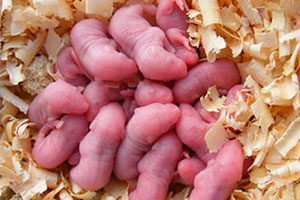Are you losing sleep because you have a nasty mice infestation in your attic?
Mice can chew through your electrical cords, destroy the precious memories that you’ve stored in your attic, and leave droppings that harbor dangerous bacteria. Mice are carriers for more than 30 types of diseases, and just two mice can quickly spiral into a full-blown infestation of over a thousand mice in just one year.
It’s so important to get rid of mice in your attic before it becomes a bigger problem. Learn more about how to get rid of mice from your attic and protect your home and family from these repulsive rodents once and for all.
7 Steps Guide on How to Get Rid of Mice in Attic
Blown insulation, also known as loose-fill or cellulose insulation, is an extremely popular form of attic insulation. However, it’s also a magnet for mice, who love to burrow up in the material and settle in to avoid the elements outside.
Mice can be a homeowner’s worst nightmare, and if you have blown insulation in your attic, the little critters will find it irresistible. The fluffy material provides an inviting home for mice to nestle up against the weather outside, and they may even use it as nesting grounds for their young.
Getting rid of mice when you have blown insulation can be tedious, but it’s not impossible.
Read on here to learn how to get rid of mice in attic when your home is insulated with fluffy material. For easy reference, we've broken down this guide into 7 steps:
Step 1. Seal up All the Holes and Cracks
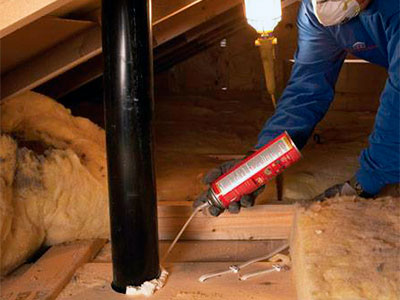 First, make sure you seal all the holes and cracks in your attic with caulk and sealant. Remember, it takes just a mere 1/4-inch hole for mice to sneak in.
First, make sure you seal all the holes and cracks in your attic with caulk and sealant. Remember, it takes just a mere 1/4-inch hole for mice to sneak in.
Mice are great climbers and can get through a hole or crack as small as a nickel. You’ll need to do a thorough inspection of every part of your home including all window panes, garage door joints, vents, and holes in the exterior of your house.
A good way to start this process is by going from room to room with a cup full of flour and sprinkling it along your walls. As you go, look for any gaps or tiny openings where mice may have chewed through. Seal each tiny opening off with caulk or steel wool.
I Have Mice in My Attic: How Were They Able to Get In?
Mice are devious and sneaky little creatures and will find and exploit any opportunity to get into your home. Any hole bigger than 1/4 inch in diameter is like leaving out a welcome mat for them to move into your attic. If that sounds ridiculously tiny, it's because it is. But it doesn't stop mice! If there's a hole, they're going to use it.
Give your home a thorough inspection and try to think like a mouse when doing so. Any opening is a signed invitation for them to come in. Where will you find these openings?
[colonizator_wrap][colonizator_col]
- Take a close look at the foundation of your home for gaps and cracks.
- Regardless, if you've noticed a draft, check your windows to see if there's any entry for mice. Double-check around your doors, too, just to be sure.
- Loose siding is an easy place for them to sneak in.
[/colonizator_col][colonizator_col]
- Any drainage pipes are especially easy to access for these awful vermin. Check where your washer and dryer drain out, and don't forget to inspect taps from your garden hose.
- Don't forget that mice are excellent climbers, so check for any cracks or holes near the roof, too.
[/colonizator_col][/colonizator_wrap]

Step 2. Get Rid of the Mice from Your Attic
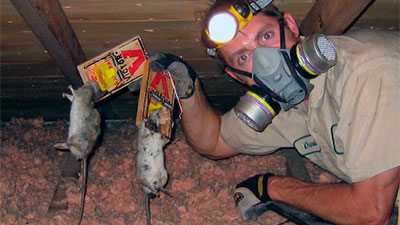 Here are a few types of traps that you can use to exterminate mice:
Here are a few types of traps that you can use to exterminate mice:
- Snap Traps: These are the classic traps that come to mind when you think of mouse traps. Instead of cheese, try a blob of peanut butter on the trap. When the mouse activates the trigger, the hinge swings down, breaking the mouse's neck. It's usually very quick and painless for the mouse.
- Glue Traps: These traps are exactly what they sound like. They lure the mouse in with food, then the mouse gets stuck and is unable to escape. These traps aren't typically recommended, since it's a slow and lengthy death for the rodent. They'll die from hypothermia since they're always moving to keep their body heat up, and being glued to the board prevents that from happening. For more information on glue traps, click here.
- Electronic Mouse Trap: These traps are great for people who don't want to look at a dead mouse. These do require batteries, but the trade-off is worth it for many people. It's quick and humane, killing the mouse with a high-voltage zap. Plus, since it's self-contained, you won't have to see the dead mouse remains. Click here to learn more about how an electric mouse trap can help rid your home of mice.
If you make the mistake of setting out poison for a mouse, and you can't seem to pinpoint exactly where the decomposing mouse is, click here to learn more about how to get rid of dead mouse smell.
What is the Best Way to Catch a Mouse?
- Set out humane traps.
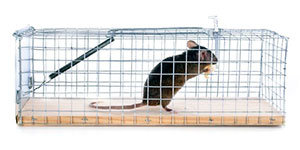 There are several types of catch-and-release traps available on the market that allow you to set it with bait and check back daily to see if you secured one. Once you do, you can release it back into the wild. What is the best humane mouse trap? Click here to know.
There are several types of catch-and-release traps available on the market that allow you to set it with bait and check back daily to see if you secured one. Once you do, you can release it back into the wild. What is the best humane mouse trap? Click here to know. - Make the trap more attractive than their environment around it.
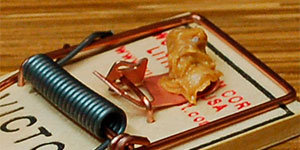 Get rid of junk that might make a cozy home for a mouse, like old newspapers and fabric. Set your trap with food that mice like, such as peanut butter or dried fruit.
Get rid of junk that might make a cozy home for a mouse, like old newspapers and fabric. Set your trap with food that mice like, such as peanut butter or dried fruit. - Get a cat.
 Cats love to show off for their humans, and chasing a mouse will give them endless entertainment. If you're lucky, you may find a headless mouse (ew!) waiting for you when you wake up in the morning. Give your cat a good petting to thank it for its hard work. To find out more details on best cat for mice control, go here.
Cats love to show off for their humans, and chasing a mouse will give them endless entertainment. If you're lucky, you may find a headless mouse (ew!) waiting for you when you wake up in the morning. Give your cat a good petting to thank it for its hard work. To find out more details on best cat for mice control, go here.
Step 3. Ventilate Your Attic
 Since you're working in your attic, you don't want to be breathing toxic fumes while you do it. It's very unlikely that the smell will go away on its own, or that other treatments might do the trick. The quickest and most efficient way to remove the gas is to ventilate your attic, which means opening a few windows or doors.
Since you're working in your attic, you don't want to be breathing toxic fumes while you do it. It's very unlikely that the smell will go away on its own, or that other treatments might do the trick. The quickest and most efficient way to remove the gas is to ventilate your attic, which means opening a few windows or doors.
Step 4. Defense Yourself
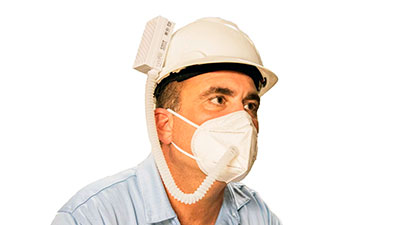 Put on a safety HEPA mask and use a ratio of bleach and water (1:10) and spray down the insulation to remove bacteria that accumulate where the mouse feces are.
Put on a safety HEPA mask and use a ratio of bleach and water (1:10) and spray down the insulation to remove bacteria that accumulate where the mouse feces are.
HEPA masks should be some of the first things that any householder should have in their arsenal when it comes to effective pest control. It is a must-have and provides an extra layer of protection against any bacteria and dangerous pathogens that may be on your skin and clothes.
[amazon_product asin="B086Z2B2F8" name="AirPro Reusable Mask with HEPA Filter" f1="Powered Air-Purifying Respirator (PAPR)." f2="HEPA H13 high-efficiency filter. Filters PM 2.5 Particles by 99.95%." f3="Unique powered ventilation system. Continuous air supply."]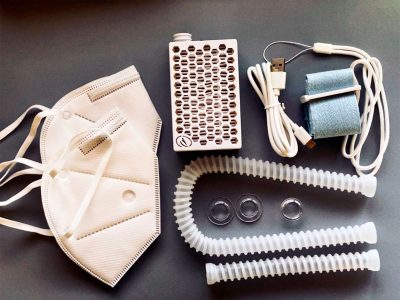 [/amazon_product]
[/amazon_product]
Step 5. Gather the Blown Insulation
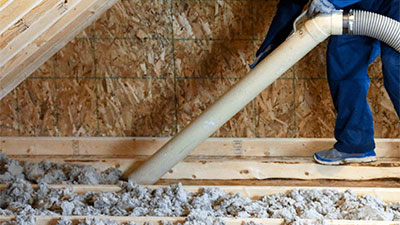 Gathering the blown insulation can be a difficult task, but using a shovel or rake can make the job a lot easier. However, using a heavy-duty shop-vac is a much faster and easier way to get the insulation out of the attic.
Gathering the blown insulation can be a difficult task, but using a shovel or rake can make the job a lot easier. However, using a heavy-duty shop-vac is a much faster and easier way to get the insulation out of the attic.
Step 6. Disinfection
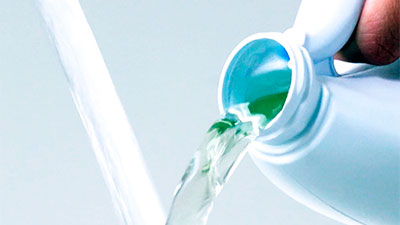 After all the traps have been set and the dead mice have been removed, it's important to disinfect the attic to get rid of any traces of the mouse infestation. This can be done by using a bleach solution. Mix 1 part bleach with 9 parts water, and pour this mixture into a spray bottle. Spay the mixture liberally in the attic, and make sure to get into all the nooks and crannies. Let the solution soak in for about 10 minutes, then rinse with clean water.
After all the traps have been set and the dead mice have been removed, it's important to disinfect the attic to get rid of any traces of the mouse infestation. This can be done by using a bleach solution. Mix 1 part bleach with 9 parts water, and pour this mixture into a spray bottle. Spay the mixture liberally in the attic, and make sure to get into all the nooks and crannies. Let the solution soak in for about 10 minutes, then rinse with clean water.
Step 7. Consider Type of Insulation
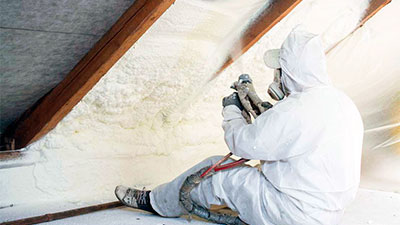 Lay down plastic sheeting, then reinstall your insulation.
Lay down plastic sheeting, then reinstall your insulation.
Now's a good time to consider switching types of insulation to something less attractive to mice, like low-VOC foam spray insulation. Low-VOC foam insulation is made without Volatile Organic Compounds (VOCs), which are harmful to both you and the environment. It's also a good idea to seal any cracks or holes in your attic with caulk or expanding foam so that mice can't get in.
Evidence of Mice in Your Attic
There are several telltale signs of having mice in your attic. For starters, the sound is a dead giveaway. If you can hear them scurrying around above your head when you’re trying to sleep, then that’s a sure bet you’ve got a mouse problem.
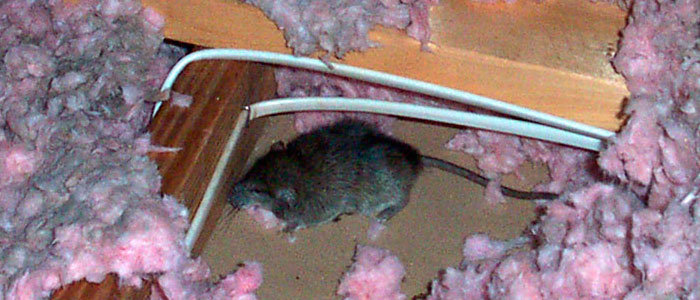
What Do They Consume in the Loft?
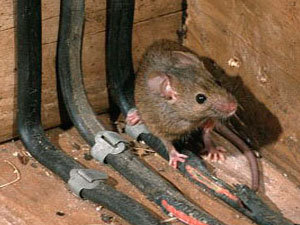 Mice’s teeth never stop growing, so they’re always chewing and always eating. They do not discriminate when choosing something for a meal, either. While mice out in the wild prefer grains and seeds, a mouse in your attic will help itself to anything readily available.
Mice’s teeth never stop growing, so they’re always chewing and always eating. They do not discriminate when choosing something for a meal, either. While mice out in the wild prefer grains and seeds, a mouse in your attic will help itself to anything readily available.
Here are a few things that are at risk of getting gnawed on by mice in your attic:
[colonizator_wrap][colonizator_col]
- Cables and Cords.
- Insulation.
[/colonizator_col][colonizator_col]
- Books, Paper, Photo Albums.
[/colonizator_col][colonizator_col]
- Drywall.
- Boards and Planks.
[/colonizator_col][/colonizator_wrap]
To a mouse, everything is fair game. If left unchecked, they’ll try to eat you out of the house and home – literally!
Mice Language
Mice have a very distinct squeak that they use to communicate with other mice. Depending on what they’re trying to say, the sound can change in pitch. It can be a high-pitched sound, or it can be lowed, but regardless, if you hear the distinct squeak of a mouse, it’s a good sign you have a mouse infestation problem in your attic. Get more information on why do mice squeak by clicking this link.
Noises Mice Make
The sounds of a mouse infestation aren’t always going to be limited to your attic. In addition to squeaking, mice can make quite the commotion when running around. You’ll hear sounds of scratching and digging throughout your house, including behind your walls. Since they’re nocturnal creatures, you’re going to hear most of their nose at night.
That’s not the only clue that you may have mice in your attic, though. Keep an eye out for these other clues of a mouse problem in your home.
[colonizator_wrap][colonizator_col]
- Check for chew marks. Mice almost always leave proof of their presence because they simply cannot stop chewing. If you have pets, check to see if they’ve eaten a hole into your cat or dog food. Inspect your insulation, too, to see if it’s been recently disturbed. Check wires for chew marks, also.
- Keep an eye out for oily streaks. Mice have greasy fur, and their favorite route will give away their most commonly traveled path. Look for dark brown stains along the floor, especially around cracks and in corners.
[/colonizator_col][colonizator_col]
- Look for their droppings. Mice leave small droppings that look like grains of rice, typically 3-8 mm long. You can find it in your insulation and upholstery, as well as around baseboards.
- Find their nests. Mice will tear up any paper or batting to make a nest. You can look for signs of their nests by keeping an eye out for shredded up paper, lint, and insulation.
- Follow the stench. Mice have a very distinct odor of urine and ammonia. The stronger the smell, the closer you are to the main source of your mouse infestation.
[/colonizator_col][/colonizator_wrap]
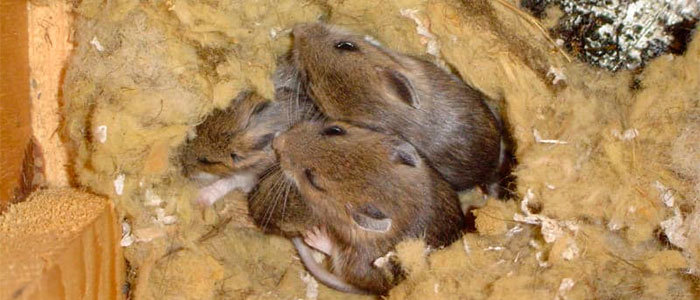
Conclusion: Evict Freeloading Mice From Your Attic Permanently
When you have a mouse problem in your attic, it’s tempting to want to grab a match and burn the place to the ground. That would be overkill! It can be hard to identify exactly where they’re hiding, and it’s easy to get frustrated. To learn where do mice hide in your home, click this link.
The best way to get rid of mice in your attic is to prevent them from even getting in there in the first place. Verify all holes are sealed, purge clutter from your attic, and place natural mouse deterrents like cloves and peppermint in your attic to ensure the disease-carrying pests don’t set up camp.
Short of that, try these 7 steps listed above to get rid of your troublesome mouse infestation fairly easily, with almost no muss or fuss, and guarantee that they won’t come back.
Having a mouse infestation can be daunting, but if you follow these steps, you should be free of them and start to feel safe again in your own home.
[toc]

